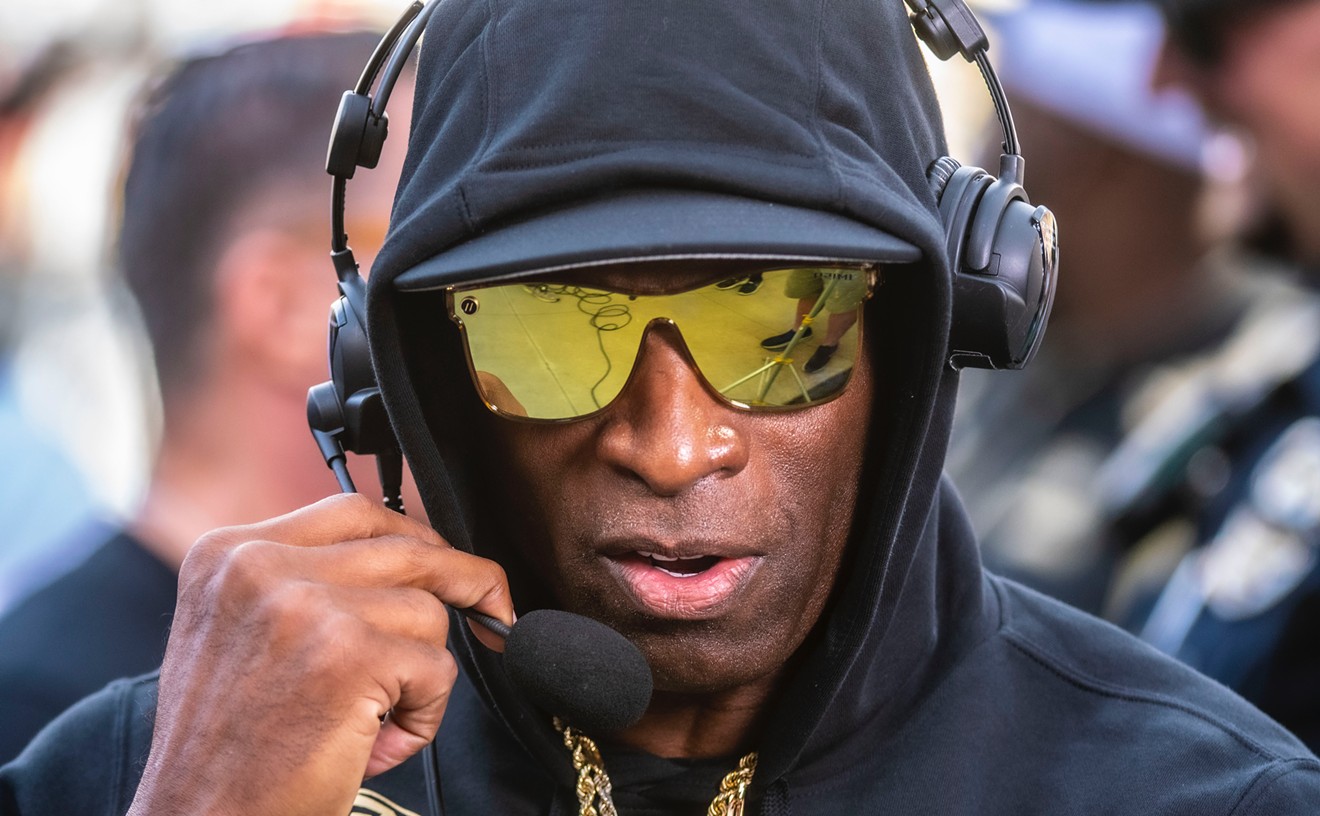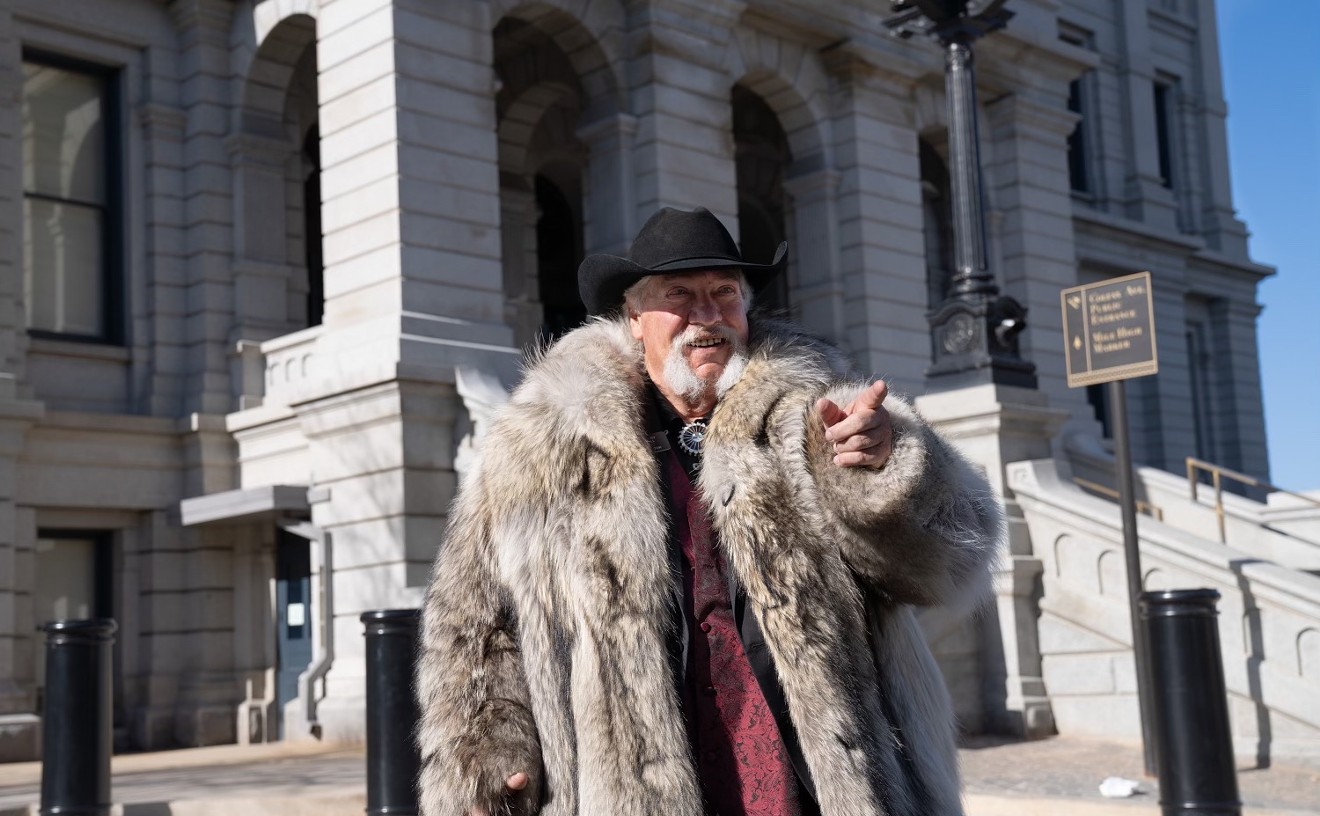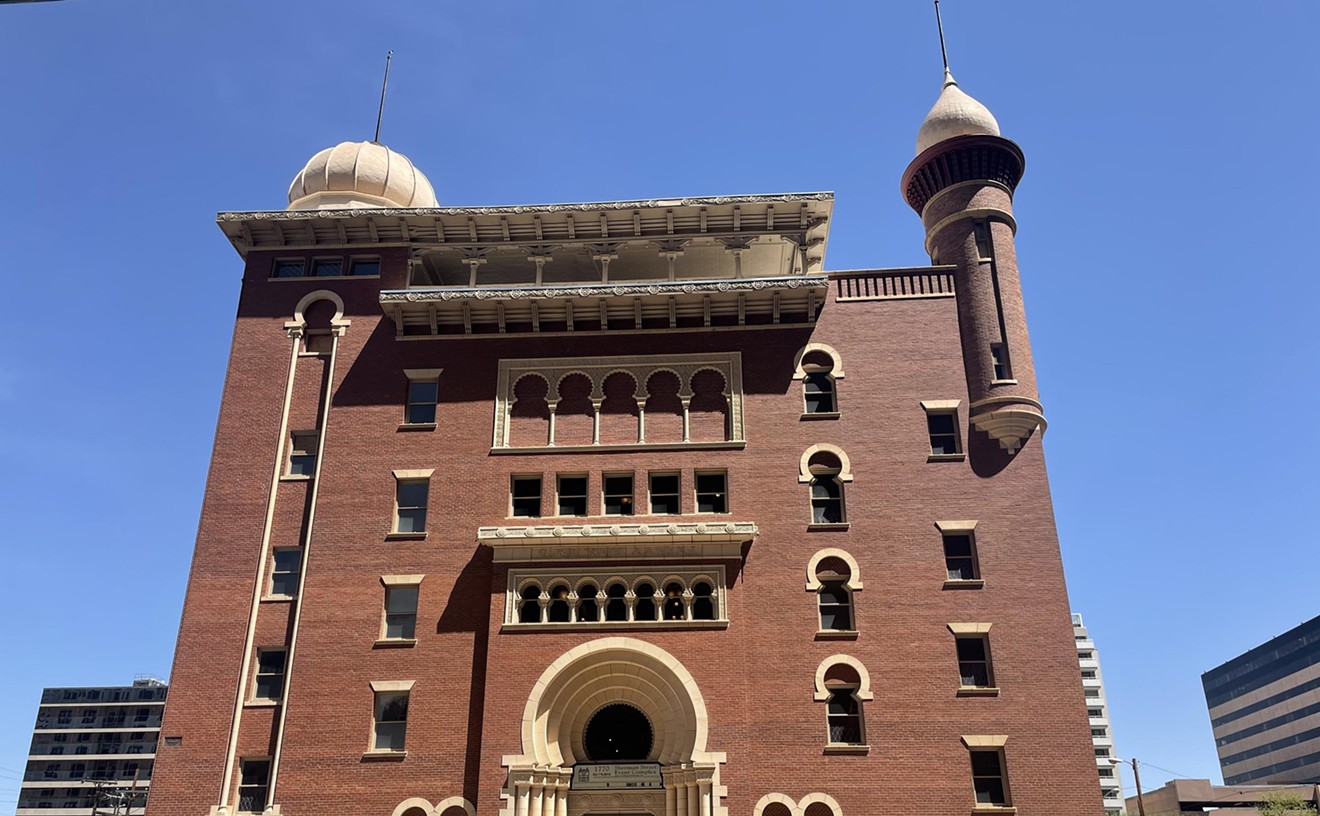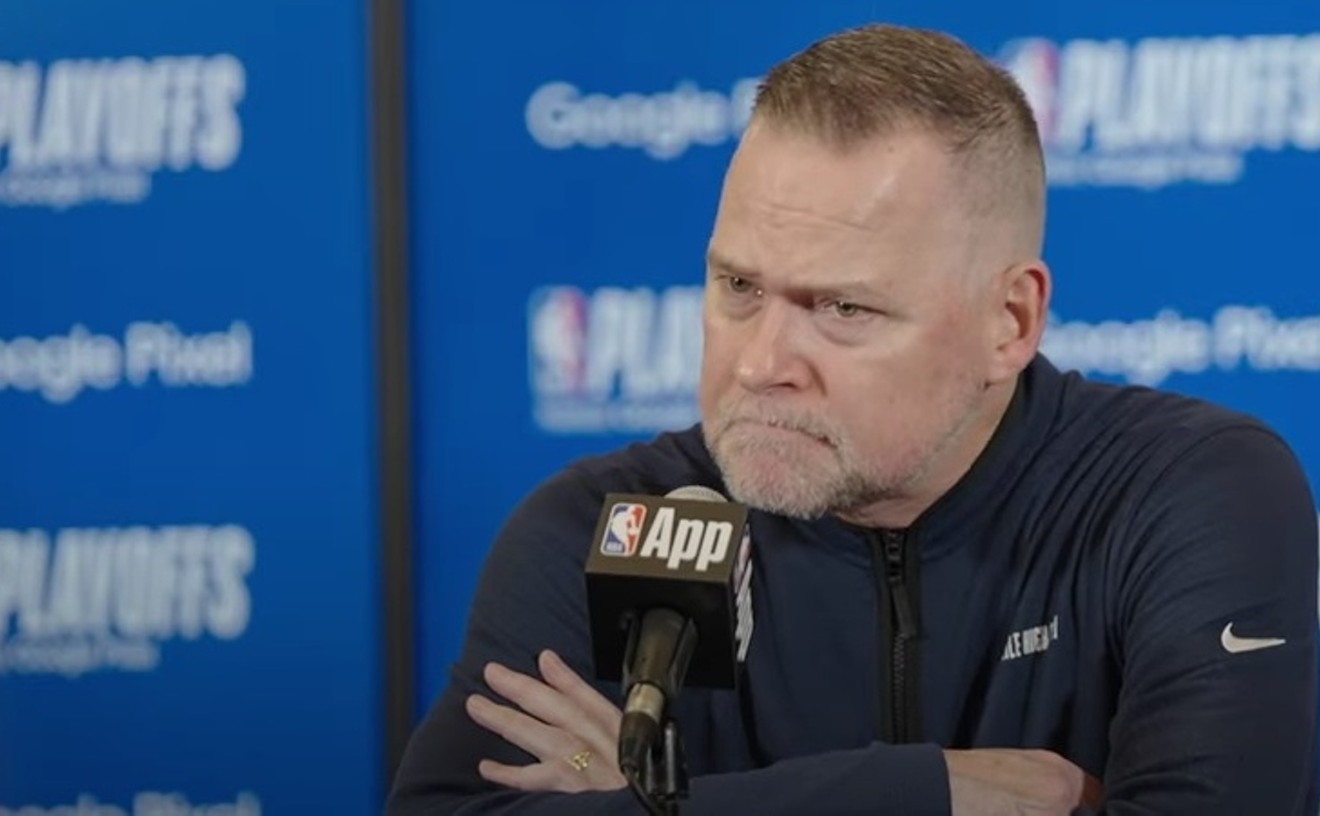"This has been too long in coming,” Governor John Hickenlooper said at the end of the Healing Run commemorating the 150th anniversary of the Sand Creek Massacre. “On behalf of the State of Colorado, I want to apologize.”
He did just that on December 3, 2014, standing on the steps of the Colorado State Capitol and making an unprecedented apology to the descendants of the massacre. On November 29, 1864, Colonel John Chivington had led a raid on a peaceful camp of Cheyenne and Arapaho on the banks of Sand Creek, 180 miles southeast of the brand-new town of Denver; 675 Colorado volunteers killed over 230 members of the tribes — mostly women, children and the elderly. And even if he didn't order the massacre, then-Colorado territorial governor John Evans created the climate that made it possible, a University of Denver commission determined last year, as the school marked its own 150th anniversary.
Evans and Chivington had co-founded the forerunner of DU just weeks before the raid on Sand Creek.
This Friday, May 27, Hickenlooper will make his first visit to the Sand Creek Massacre National Historic Site, where he’ll recognize the recent transfer of 640 acres of state-owned land to the National Park Service. “Visiting the site of the Sand Creek Massacre adds to the living history of this important part of Colorado’s past,” says Hickenlooper. “Lieutenant Governor Donna Lynne and I are honored to have the opportunity to see and feel it firsthand so we can better share this story.”
This may be his first visit, but Hickenlooper has long been interested in the history of Sand Creek. Thirty years ago, when the then-unemployed geologist and his partners were considering names for the brewpub they planned to open at the corner of Wynkoop and 18th streets in Lower Downtown, Hickenlooper had researched the history of Major Edward “Ned” Wynkoop and learned that he was a man of peace.
In the fall of 1864, Wynkoop had brokered a meeting between Evans and Chief Black Kettle, “who agreed to a truce and had been assured — or so he thought — that his people would have safe refuge at Sand Creek,” Hickenlooper told the crowd that December day. Hickenlooper had learned that two weeks after the slaughter, Captain Silas Soule, who’d refused to have his regiment join in the killings by the until-then “Bloodless Third” volunteers, wrote a letter about the horrors he’d witnessed at Sand Creek to Wynkoop, his former commander, who shared the message with Army higher-ups in Washington, D.C. Soule wrote about how he’d seen babies’ brains bashed in. He wrote about the mothers killed trying to protect their children. He wrote about the bodies being desecrated and troops riding off to Denver with “trophies.” Soule later testified about what he’d seen before Congress, which conducted two investigations into Sand Creek (the Army held a third) and declared it a massacre in 1865 — shortly after Soule was assassinated on the streets of Denver in April 1865.
After that, Soule’s letter was lost to history — but it was miraculously rediscovered in 2000, just before Congress was slated to consider a proposal to make the land where Chivington’s troops had committed the massacre a national historic site; Senator Ben Nighthorse Campbell of Colorado read Soule’s words aloud as some representatives wept. The site was authorized in November 2000 — 135 years after Congress had first recognized that Sand Creek was a massacre.
Righting a wrong can take a long time. Although the site was dedicated nine years ago, the Park Service is just finishing its master plan and will soon be working on explanatory signage. and plans are in the works to establish an archive in the old Murdock Building in Eads, the town sixteen miles from the site, which the governor and lieutenant governor will also visit Friday.
Then again, Colorado is still grappling with how to commemorate the massacre. Over a century ago, the Pioneers’ Association erected a Civil War monument at the Capitol, which included Sand Creek as one of the glorious battles. Twenty-five years ago, an outraged lawmaker called for removing Sand Creek from the list of battles — but tribal representatives stepped in, arguing that history should be explained rather than erased. And so a new plaque was added, clarifying Chivington’s actions.
But is that enough to honor the memory of the people who once occupied the land where the Capitol now stands, people forced to flee the future state of Colorado after the massacre?
On May 20, descendants of the Cheyenne and Arapaho who’d scattered to Montana, Wyoming and Oklahoma 151 years ago came back to Colorado to discuss plans to build a permanent monument to the Sand Creek Massacre on the grounds of the Capitol. When the design — created by Harvey Pratt, a member of the Cheyenne and Arapaho tribes — was first presented to the Capitol Building Advisory Committee late last year, members complained that the monument might ruin the “symmetry” of the grounds and that a proposed medicine wheel might prove a safety hazard. In the intervening months, One Earth Future, the Broomfield-based nonprofit that is coordinating the proposal (and providing most of the funding), has addressed those concerns — and more. One Earth Future's Dina Klimkina explained that the medicine wheel is now part of a tepee that will stand behind the figure of a fallen women, reaching out to fleeing tribal members — crying out to be remembered. The path leading from the monument has been shortened, but it will still show the footprints of those who escaped, footprints that will be created by their descendants. The plan has the support of Hickenlooper; of the offspring of John Evans, who was forced to resign after the massacre; and, most important, of the tribal descendants. (See more on the monument project here.)
“This was our homeland,” Hubert Friday, a member of the Northern Arapaho, told the committee as he remembered and wept. “For too many years, Sand Creek has been a dark, hidden chapter.”
“I was never taught about Sand Creek in school,” added Max Bear, a member of the Southern Cheyenne and Arapaho. “The monument will be our voice.”
“Colorado is on the cutting edge of so many things,” observed Steve Turner, the executive deputy director of History Colorado, noting that the monument would be part of the “most important civic center in the country,” one that itself is on the national register. “This is a step toward healing and closing some divisiveness.”
And there has been plenty of that — much of it not exactly ancient history. When the History Colorado Center opened in April 2012, tribal descendants were outraged by Collision, the dumbed-down, Disneyfied exhibit dedicated to Sand Creek. The descendants were so concerned about the process used to create Collision — tribal reps had not been consulted, as required by federal law — and the errors that resulted that they demanded the exhibit be closed. Fourteen months after it had opened (and four months after I first revealed the tribes’ concerns), Collision was finally sealed off, and it has never reopened.
In the intervening years, much of History Colorado’s management has been replaced. State archaeologist Holly Norton now represents History Colorado in consultations with the tribes. Last December, at the urging of descendants, the History Colorado exhibit dedicated to Bent’s Fort was changed to illustrate Cheyenne and Arapaho involvement at the fort, with new artifacts and text added; a fictitious character and offensive cartoons have been eliminated. The consultations will continue, Norton says, adding that tribal representatives and History Colorado are in the “beginning phases” of discussions to create a replacement Sand Creek exhibit.
But first, History Colorado is pushing for the monument, as well as any appropriate memorialization of the massacre. The Capitol committee is slated to vote on the proposal in August; after that, it moves to the legislature, and then the governor. In the meantime, says Norton, “We encourage Coloradans to visit the actual site of the massacre.”
Just as Hickenlooper is now doing. As he said that historic day on the Capitol steps: “We will not run from our history. I will make sure this history continues to be told.”
[
{
"name": "Air - MediumRectangle - Inline Content - Mobile Display Size",
"component": "12017618",
"insertPoint": "2",
"requiredCountToDisplay": "2"
},{
"name": "Editor Picks",
"component": "17242653",
"insertPoint": "4",
"requiredCountToDisplay": "1"
},{
"name": "Inline Links",
"component": "18838239",
"insertPoint": "8th",
"startingPoint": 8,
"requiredCountToDisplay": "7",
"maxInsertions": 25
},{
"name": "Air - MediumRectangle - Combo - Inline Content",
"component": "17261320",
"insertPoint": "8th",
"startingPoint": 8,
"requiredCountToDisplay": "7",
"maxInsertions": 25
},{
"name": "Inline Links",
"component": "18838239",
"insertPoint": "8th",
"startingPoint": 12,
"requiredCountToDisplay": "11",
"maxInsertions": 25
},{
"name": "Air - Leaderboard Tower - Combo - Inline Content",
"component": "17261321",
"insertPoint": "8th",
"startingPoint": 12,
"requiredCountToDisplay": "11",
"maxInsertions": 25
}
]











